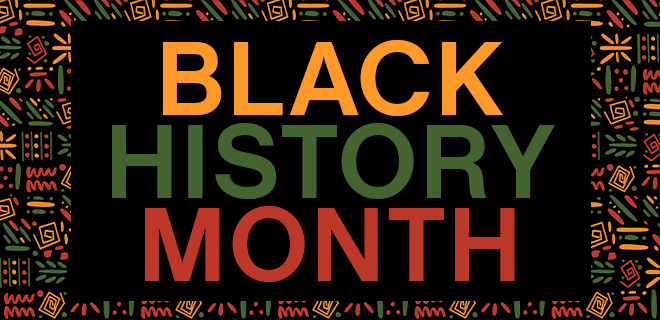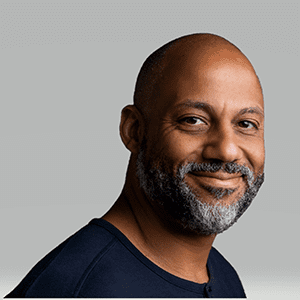
Black professionals occupy just 3.7% of technical roles, according to the Kapor Center’s State of Tech Diversity report compiled last year. While there is room for improvement in diversifying ad tech, we want to celebrate the ones making strides daily.
Over the past 20+ years, media vet Charles Cantu worked at companies like Disney, Comcast, and MediaMath. After building and selling two digital marketing businesses, in 2018, he took his passion and expertise to found RESET DIGITAL to deliver on the promise of programmatic advertising while unleashing the power of cognitive messaging.
Since its inception, RESET DIGITAL has led globally in next-generation neurocognitive marketing technology (Neuro-Programmatic™). It leads the industry’s Universal Inclusion™ initiative, where 3% of all revenues are shared with NABOB and other organizations to ensure longevity in supporting diverse-owned and operated media.
Cantu is also the resident technology expert for MASB’s (Marketing Accountability Standards Board) digital accountability committee and is a board advisor for the institute for advertising ethics. And, considering he’s a well-known keynote speaker, you’ve probably seen him on the conference circuit before.
Getting Into Ad Tech and Founding RESET DIGITAL
Yakira Young: Did you always know that advertising technology was a space you wanted to be in? In other words, how did you land a career in advertising technology?
Charles Cantu: No! As a young man, I aspired to be a pro football player and a rapper. As I got older, I put all my energy and attention into learning everything I could about technology and computing. From there, I started a couple of small businesses that I was fortunate enough to have sold and ended up working for ABC radio, where I fell in love with advertising and ad tech.
YY: You founded RESET DIGITAL in 2018, just shy of the pandemic. What made you launch Reset?
CC: As a serial entrepreneur, launching Reset Digital wasn’t novel. It was, however, timely and deeply personal. My mission has always been to help brands reach ALL audiences in ways that serve and reflect our diverse culture and drive the strongest two-way value exchange possible between brands and the people brands seek to attract. The last twenty years of programmatic did the opposite. I am so proud that our dream of a better programmatic has come alive five years in. Brands like GM, P&G, and Verizon work with us to transform neuro-programmatic advertising investments into inclusive-effective campaigns.
Brand Safety Negatively Impacts Black Media
YY: In an article, you wrote for AdExchanger on brand safety and Black-owned and Black-centered media, you talked about the evolution of brand safety tools and how they negatively impact Black-media. How so, and what can be done to combat this?
Brands must transition from broad, automated blocklists to post-campaign analytics to develop a more equitable and inclusive brand safety strategy and keep one's brand safe without sucking the oxygen out of diverse media organizations.
CC: Brand safety promises to prevent advertisers from associating their brands with violence, hate, and other phenomena that could lead consumers to turn their backs on a brand do not align with practice. Many current brand safety practices, like blocklists, have led brands to turn their backs on historically underrepresented consumers and media owners, especially Black folks.
Brands must transition from broad, automated blocklists to post-campaign analytics to develop a more equitable and inclusive brand safety strategy and keep one’s brand safe without sucking the oxygen out of diverse media organizations.
The good news is that a better brand safety strategy only requires a little extra work for advertisers. They can engage a partner to work with their brand safety vendor to conduct analytics and advise them on organizations, keywords, sites, and URLs to avoid.
In addition, agencies, advertisers, and brand safety organizations need to be more transparent about their brand safety practices and the organizations they are blocking. Operating in darkness puts underrepresented media at a disadvantage — they’re getting blocked and don’t know why it’s happening, allowing shady practices to persist without scrutiny. By shining light on brand safety practices, the industry can come together to identify the problem’s scope and solutions.
YY: Significant consequences come with brand safety automation tools. The two biggest ones are Black publishers missing out on media spend and Black consumers missing out on hearing from brands. What can the industry do to turn this around in 2023 and beyond?
CC: You are spot on. Reading the article you referenced above would be a great start. It points out a few steps a brand can take to ensure Black publishers and audiences are no longer starved of great brand experiences and the outcomes they induce.
DEI in the Advertising Ecosystem
YY: DEI needs to be more present in the advertising ecosystem. Many companies put multiculturalism in a box when the multicultural population is the majority. What are some strides the industry can take to humanize the multicultural box?
CC: The big thing is aligning ad spend with culture, leveraging businesses that help businesses do just that. The world we serve is 40-50% multicultural when you overlay underrepresented communities. In short, multicultural is a norm. P&G, GM, and Verizon have been leaders in putting that front and center. It began with discussions of increases in media spend. It is now a huge mantra that cuts across every layer of their companies.
To read more stories in our Black History Month series, check out:
- 10 Black Ad Tech Professionals Making Waves in Digital Media and Advertising
- Breaking the Glass Ceiling: The Legacy of Louis Jones, Brand Safety Institute
- The Importance of Black Media and Sharing Your Wealth: Cedric J. Rogers, Culture Genesis Inc.
- A Seat at the Table With Lashawnda Goffin, CEO, Colossus SSP